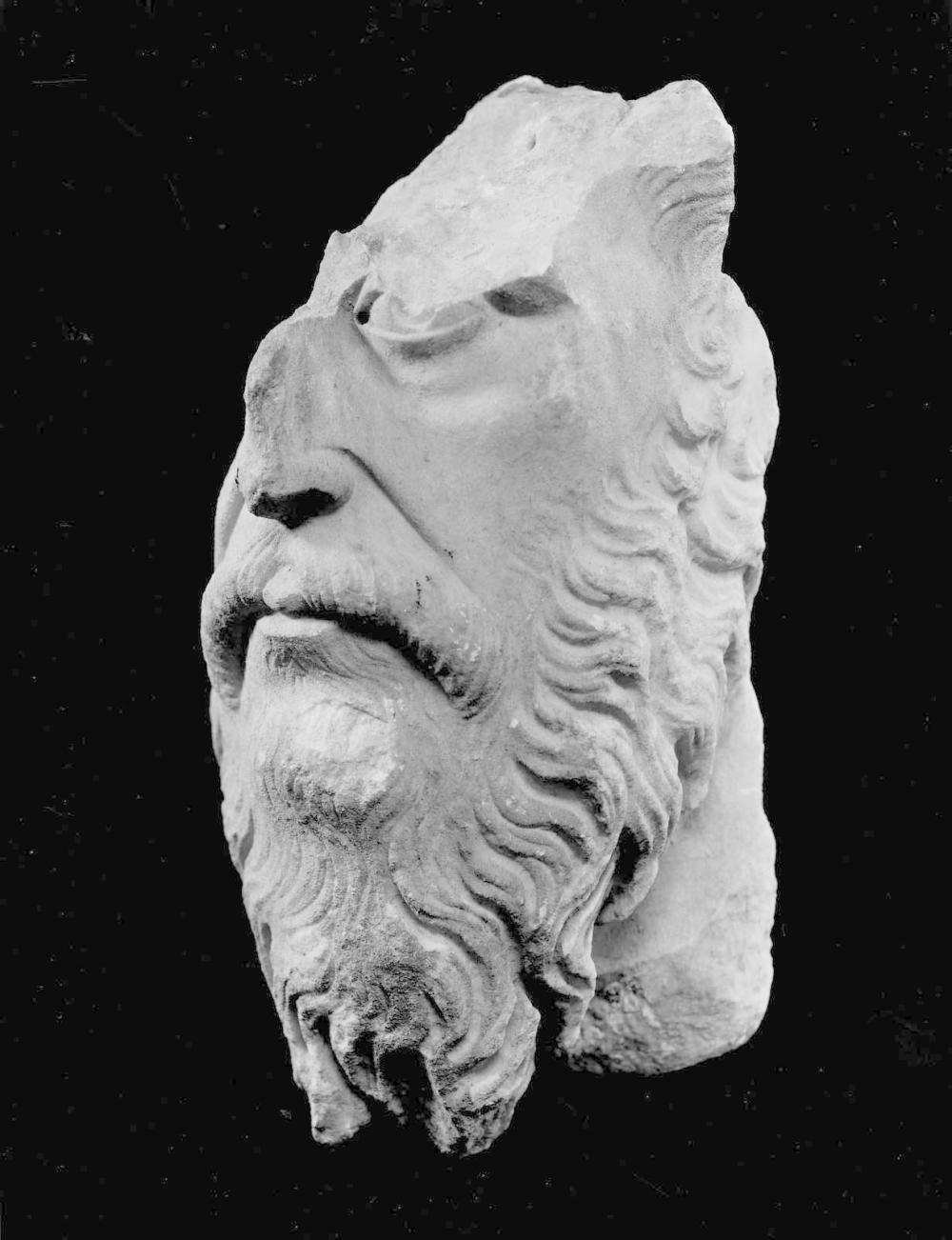Advanced Search 

Portrait of a philosopher or official
Byzantine
Early Byzantine Period
5th century
Findspot: Anatolia (Turkey), Troad, Assos (Behramkale), Agora; Place of Manufacture: Greece or Turkey, Attica or Troad, Athens or Assos
Medium/Technique
Marble from Mt. Pentelikon near Athens
Crystalline Greek marble, from the northern Aegean islands (not Thasos) or western Asia Minor.
Scientific Analysis:
Harvard Lab No. HI770: Isotope ratios - delta13C +2.73 / delta18O -6.86, Attribution - Pentelikon, Justification - Micaceous, fine grained marble.
Crystalline Greek marble, from the northern Aegean islands (not Thasos) or western Asia Minor.
Scientific Analysis:
Harvard Lab No. HI770: Isotope ratios - delta13C +2.73 / delta18O -6.86, Attribution - Pentelikon, Justification - Micaceous, fine grained marble.
Dimensions
28.7 cm (11 5/16 in.)
Credit Line
Gift of the Archaeological Institute of America
Accession Number84.65
CollectionsEurope, Ancient Greece and Rome
ClassificationsSculpture
Catalogue Raisonné
Sculpture in Stone (MFA), no. 373; Sculpture in Stone and Bronze (MFA), p. 115 (additional published references).
DescriptionA fragmentary head of a bearded male. the surviving eye is almond shaped with thin lids. The pupils have been incised with the use of the drill. His gaze is directed forward, out toward the viewer. The skin beneath his remaining eye is sunken. He has a long beard, which is made up of repetitive clumps of locks that curl toward his chin where it gathers to form two inward curling sections. The hair of his mustache is long, entirely obscuring his upper lip. His lower lip peaks out from beneath the mustache. Deep lines extend from his nostrils to the top of his mustache, framing his mouth. The hair and beard are rendered with a combination of flat chisel and drill work.
Condition: The head is broken from the right cheek to the brow and then across the brow. The back of the head and neck have been deliberately taken off, perhaps when the piece was used as building material. The left eye and eyebrow are chipped. The upper half of the left eye and the brow above it are visible in a photograph in “Investigations at Assos,” but this (then-detached) fragment apparently never reached Boston. The base of the neck is rounded for insertion in a draped statue. The underside and side of the throat have been worked over with a claw-chisel. There is a pin hole on the left side of the brow. What remains of the head is fresh, with a yellow patina.
Condition: The head is broken from the right cheek to the brow and then across the brow. The back of the head and neck have been deliberately taken off, perhaps when the piece was used as building material. The left eye and eyebrow are chipped. The upper half of the left eye and the brow above it are visible in a photograph in “Investigations at Assos,” but this (then-detached) fragment apparently never reached Boston. The base of the neck is rounded for insertion in a draped statue. The underside and side of the throat have been worked over with a claw-chisel. There is a pin hole on the left side of the brow. What remains of the head is fresh, with a yellow patina.
ProvenanceFrom Assos (Behramkale, Turkey); Agora. 188?: excavated by the Archaeological Institute of America; gift of the Archaeological Institute of America to MFA, January 1884.
